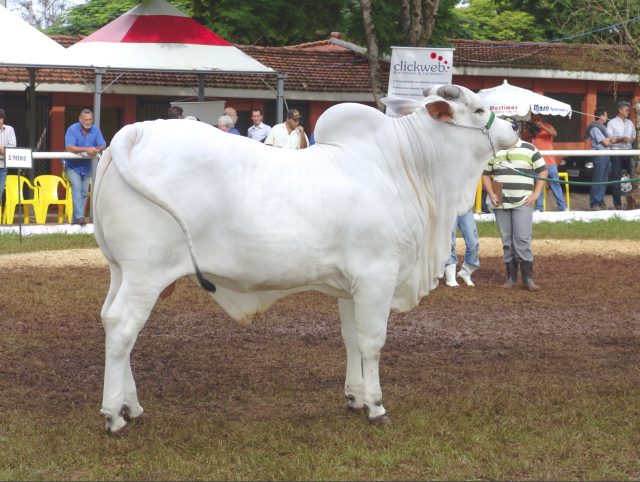Type the name of the breed you're looking for below
[wpdreams_ajaxsearchlite] Don't see the breed your're looking for? Click here and let us know!
Nelore cattle
| Place of Origin | India |
| Origin | The first pair of Ongole Cattle arrived in Brazil by ship in 1868, at Salvador, Bahia. Manoel Ubelhart Lemgruber, from Rio de Janeiro Zoo, bought two more from Hamburg Zoo in 1878. The most recent importations from India were of one hundred animals in the 1960s. The Nelore herd book was founded in 1875. In the first decades of twentieth century, the favored breed of zebu in Brazil was the Indubrasil or Indo-Brazilian, but from the 1960s onwards, Nelore became the primary breed of beef cattle in Brazil because of its hardiness, heat-resistance, and because it thrives on poor-quality forage and breeds easily, with the calves rarely requiring human intervention to survive. Currently more than 80% of beef cattle in Brazil (approximately 100,000,000 animals) are either purebred or hybrid Nelore, making them the majority breed in Brazil. Bulls of this breed have been exported to many other countries in the Western Hemisphere, such as United States and Venezuela in the last decades. |
| Purpose | Beef. While the beef of some breeds have excessive marbling, or intra-muscular fat, beef from Nelore cattle have enough fat to be highly palatable. The Nelore matches the recent shift in the beef industry towards a low calorie, leaner meat diet, without compromising taste. This was demonstrated at the 1991 Houston Livestock Show and Rodeo, when a purebred Nelore steer won the “Best Overall in Taste” contest, competing against dozens of hybrid and European steers. |
| Appearance | Nelores have long, deep bodies with clear underlines, keeping vulnerable parts out of the way of infection. Cows have small udders and short teats, while bulls' sheaths are also short. These characteristics contribute to the breed’s reproductive efficiency. Nelore dams have a long and prolific reproductive life, pronounced mothering ability, and plenty of milk for their calves. The Nelore cows calve very easily due to their greater frame, wide pelvic opening and larger birth canal, which reduces the incidence of dystocia. The Nelore has a loose skin with sweat glands that are twice as big and 30% more numerous than those of the European breeds. The Nelore’s black skin, covered by a white or light gray coat helps filtering and reflecting harmful sun rays. Its low level of metabolism also contributes to heat resistance, as the Nelore feeds less but often, generating less internal heat. Nelores possess natural resistance to various insects, as its skin has a dense texture, making it difficult for blood sucking insects to penetrate. Nelores also have a well developed subcutaneous muscle layer which enables them to remove insects simply by shaking their coat. |
| Horns | Polled (hornless) |
| Other Considerations | It is said that there is no ideal breed, and that every breed has strong points and none is better for all important economic traits, the Nelore is certainly the best alternative for economic beef production in the tropics, which are responsible for 65% of the world’s bovine population. |



